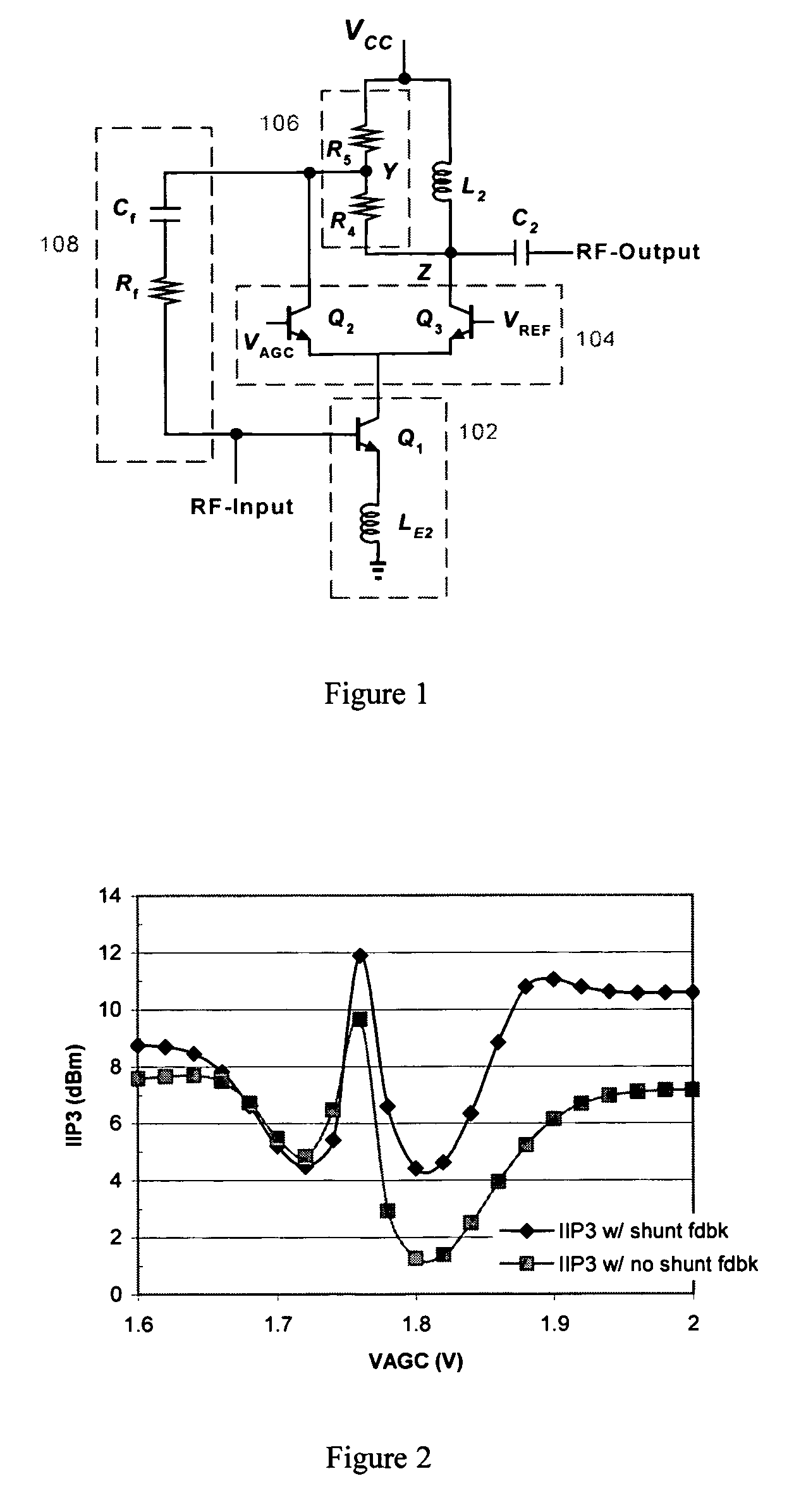Continuous variable-gain low-noise amplifier
a low-noise amplifier, continuous variable-gain technology, applied in the direction of low-noise amplifiers, amplifier combinations, gain control, etc., can solve the problems of consuming additional chip area, reducing the gain, and not allowing the optimization of the operating characteristics of the overall system under all operating conditions. , to achieve the effect of excellent linearity, low gain and reduced gain
- Summary
- Abstract
- Description
- Claims
- Application Information
AI Technical Summary
Benefits of technology
Problems solved by technology
Method used
Image
Examples
Embodiment Construction
[0015]FIG. 1 shows a circuit schematic of a continuous variable-gain LNA constructed in accordance with one embodiment of the present invention. The circuit of FIG. 1 includes an input transconductance stage 102, a current-steering circuit 104, and an output load network 106. The input stage consists of an inductively degenerated common-emitter transistor Q1 with its collector connected to the emitters of Q2 and Q3, which form the cascode current steering circuit. The output load network consists of resistors R4 and R5 connected in series between the supply voltage VCC and node Z. Transistors Q2 and Q3 are arranged in a common-base configuration with the collectors of Q2 and Q3 tied to output load network nodes Y and Z, respectively. The base of transistor Q3 is connected to a reference voltage VREF, while the base of Q2 is connected to the gain control voltage VAGC. A shunt feedback network 108 is connected from node Y of the load network to the base of the input stage transistor Q...
PUM
 Login to View More
Login to View More Abstract
Description
Claims
Application Information
 Login to View More
Login to View More - R&D
- Intellectual Property
- Life Sciences
- Materials
- Tech Scout
- Unparalleled Data Quality
- Higher Quality Content
- 60% Fewer Hallucinations
Browse by: Latest US Patents, China's latest patents, Technical Efficacy Thesaurus, Application Domain, Technology Topic, Popular Technical Reports.
© 2025 PatSnap. All rights reserved.Legal|Privacy policy|Modern Slavery Act Transparency Statement|Sitemap|About US| Contact US: help@patsnap.com



